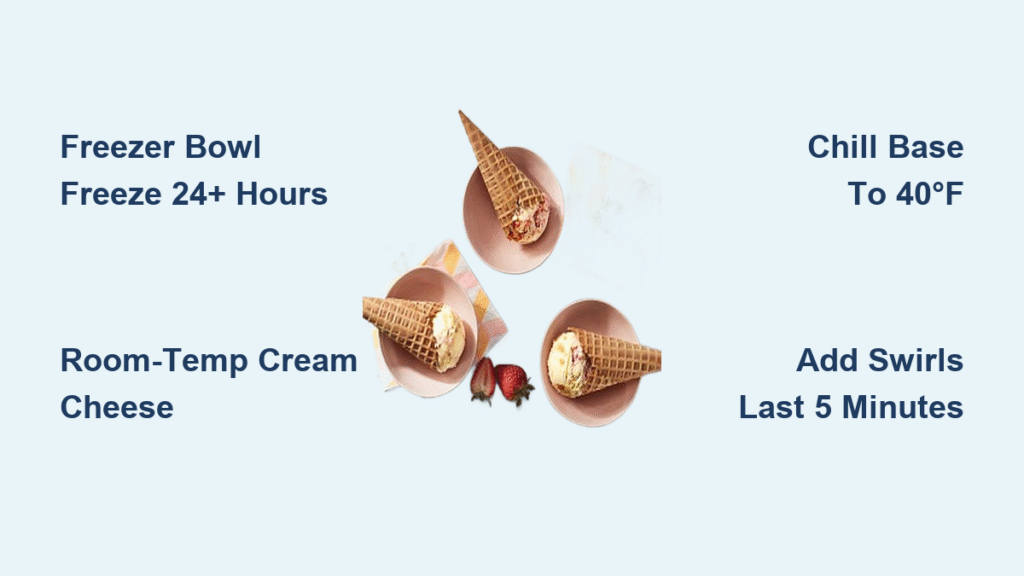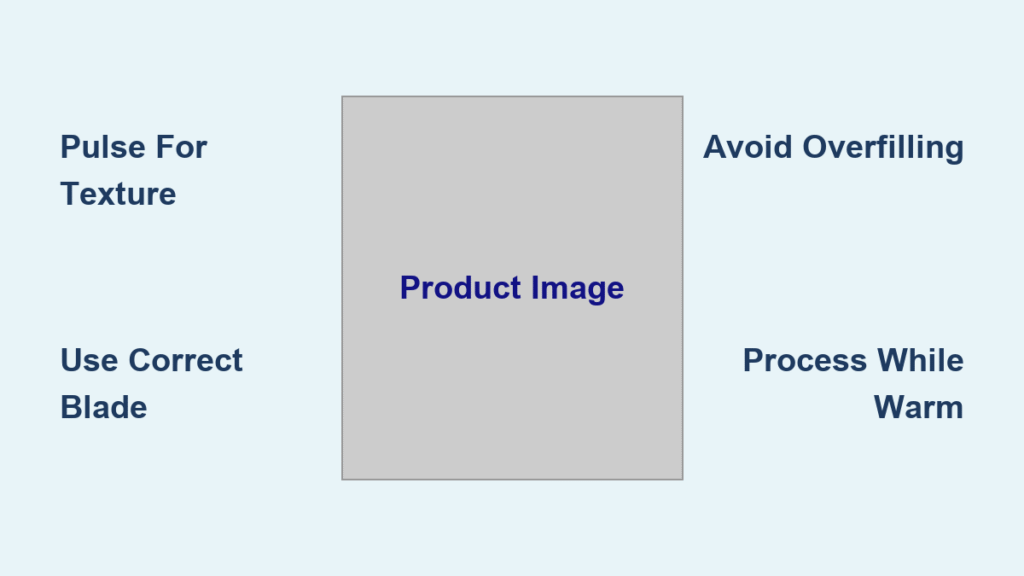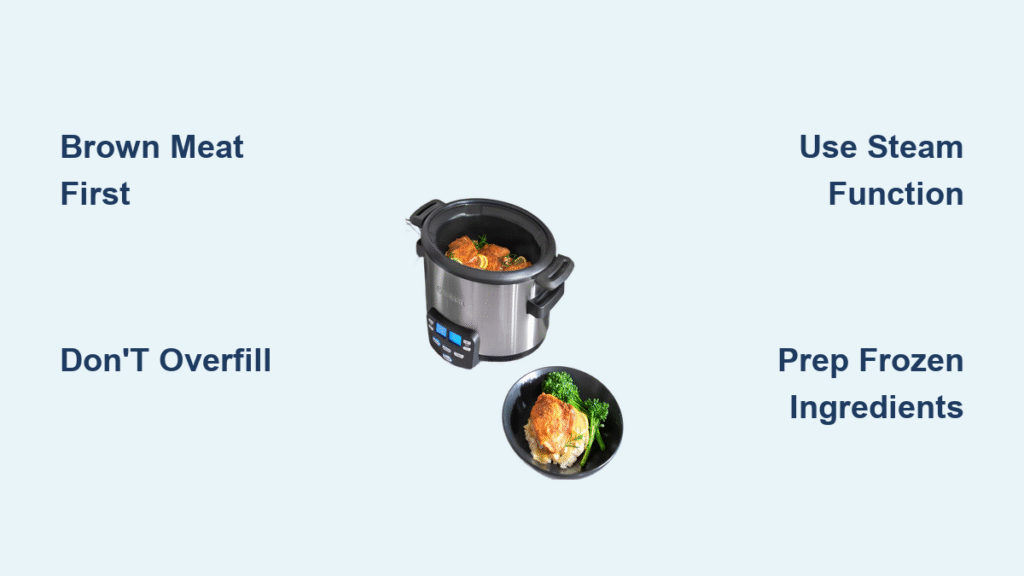That first spoonful of velvety, rich ice cream made in your Cuisinart machine should melt slowly on your tongue—never icy or grainy. When you use cuisinart ice cream maker recipes with eggs, you unlock the French custard technique that transforms basic ingredients into premium dessert experiences. Egg yolks act as nature’s emulsifier, binding fat and liquid molecules for that luxurious mouthfeel store-bought tubs can’t replicate.
This guide delivers battle-tested custard-based recipes specifically engineered for Cuisinart machines. You’ll master the critical tempering process, avoid common curdling disasters, and discover how egg-enriched bases create ice cream that stays scoopable straight from the freezer. Whether you’re reviving your vintage Cuisinart ICE-21 or testing the latest ICE-100 model, these techniques work universally across the brand’s lineup.
Why Egg Yolks Transform Cuisinart Ice Cream Texture
French-style custard bases create fundamentally different ice cream than Philadelphia-style (egg-free) versions. The magic happens when egg yolks coat fat molecules in cream and milk, forming a stable emulsion that resists ice crystal formation during freezing. This scientific process delivers three game-changing benefits for your Cuisinart machine: slower melting, richer mouthfeel, and professional-level smoothness without expensive stabilizers.
Custard Base Ingredient Ratios That Never Fail
- Heavy cream: 2 cups (provides essential fat content for richness)
- Whole milk: 1 cup (balances cream for optimal texture)
- Granulated sugar: ¾ cup (sweetens while lowering freezing point)
- Large egg yolks: 5 (critical emulsifiers—never substitute whole eggs)
- Vanilla bean: 1 pod (scrape seeds; extract lacks depth)
- Salt: ⅛ teaspoon (flavor amplifier)
Pro Tip: For ultra-premium texture, add one extra yolk—but never reduce below five for 3 cups of liquid base. Fewer yolks risk separation during churning.
Mixing the Custard Without Curdling
Combine cream, milk, sugar, vanilla seeds, and salt in a heavy-bottomed saucepan. Heat over medium-low until steaming (170°F), stirring occasionally to dissolve sugar. Critical warning: Never boil—scalding temperatures cause immediate curdling when adding yolks. Remove from heat just as tiny bubbles form at the pan’s edge.
Perfect Egg Tempering Technique for Foolproof Custard
Scrambled eggs in your ice cream base ruin texture permanently. Proper tempering gradually raises yolk temperature while maintaining emulsion integrity—a non-negotiable step for cuisinart ice cream maker recipes with eggs.
Step-by-Step Tempering Process
- Whisk yolks vigorously in a separate bowl until pale yellow and ribbon-like
- Slowly drizzle ½ cup warm cream mixture into yolks while whisking constantly
- Return tempered yolks to saucepan, stirring immediately
- Cook on low heat until custard coats a spoon (175°F)—about 3 minutes
Expert Note: Use a spoon test—run your finger across the back. If it leaves a clean path that doesn’t run, it’s ready. Overcooking past 180°F causes irreversible curdling.
Straining and Chilling Protocols for Crystal-Free Results

Skipping straining creates gritty ice cream even with perfect tempering. This step removes any coagulated egg particles and undissolved sugar crystals that would compromise texture.
Essential Straining Method
Pour hot custard through a fine-mesh strainer into a clean bowl, pressing with a spatula to extract all liquid. For silky results, strain twice—first through standard mesh, then through cheesecloth. This eliminates 95% of potential texture flaws before freezing.
Non-Negotiable Chill Time Requirements
- Minimum refrigeration: 8 hours (overnight is ideal for flavor development)
- Temperature verification: Base must reach 40°F or lower before churning
- Quick-chill alternative: Ice bath for 2 hours (stirring every 15 minutes), but flavor suffers
Critical Insight: Warm custard overworks your Cuisinart machine, causing excessive ice formation and longer churning times. Always verify temperature with an instant-read thermometer.
Cuisinart-Specific Churning Process for Egg Bases
Your machine’s performance depends entirely on properly prepared custard. These protocols prevent common issues like motor strain or incomplete freezing.
Pre-Churn Checklist
- Freeze bowl 24 hours (not 12)—shake test: no liquid sloshing sound
- Chill custard in the coldest fridge zone (back, bottom shelf)
- Assemble machine with bowl locked into base unit
Churning Timeline for Custard Bases
- Pour custard while machine runs (prevents motor strain)
- Churn 22-25 minutes until thick soft-serve consistency
- Add mix-ins only during final 3 minutes (prevents uneven distribution)
- Stop immediately when mixture pulls away from bowl sides
Warning: Over-churning causes butterfat separation—your ice cream will resemble yellowed butter with liquid pooling.
Classic Vanilla Bean Custard Recipe (1 Quart)
Ingredients You’ll Need
- 2 cups heavy cream
- 1 cup whole milk
- ¾ cup granulated sugar
- 5 large egg yolks
- 1 vanilla bean (split and scraped)
- Pinch of salt
Foolproof Instructions
- Heat cream, milk, sugar, vanilla seeds, and salt until steaming
- Temper yolks as described, then return to heat
- Cook until custard coats spoon (175°F), stirring constantly
- Strain twice, chill 8+ hours
- Churn 22 minutes in Cuisinart machine
- Transfer to container, freeze 4 hours for firm texture
Serving Hack: Store finished ice cream with plastic wrap pressed directly on the surface. This prevents freezer burn and ice crystals for weeks.
Toasted Marshmallow Custard Variation
Transform basic vanilla into the most requested homemade flavor with this genius technique.
Critical Toasting Steps
- Arrange marshmallows on baking sheet, ½ inch apart
- Broil 60-90 seconds until golden peaks form (watch constantly!)
- Cool 5 minutes, then blend 1 cup toasted marshmallows into warm custard
- Strain immediately to remove any skin fragments
Pro Move: During final churning minute, add ¼ cup mini marshmallows for gooey pockets. Serve in waffle cones with hot fudge for ultimate nostalgia.
Blueberry Cheesecake Gelato (Egg-Enhanced)
Gelato’s higher milk ratio creates intense fruit flavor, while egg yolks provide necessary structure without heavy cream.
Gelato-Specific Adjustments
- Milk-to-cream ratio: 2 cups milk : 1 cup cream (opposite of French style)
- Cream cheese: 4 oz softened, blended into warm custard until smooth
- Mix-ins: ½ cup blueberry compote + ½ cup crushed Biscoff cookies
Texture Secret: Churn 25-28 minutes—gelato requires slower air incorporation. The result is dense, spoon-coating richness that tastes like frozen cheesecake.
Lemon Curd Custard Ice Cream
Bright citrus cuts through richness while egg yolks prevent curdling from acid exposure.
Lemon Integration Protocol
- Prepare standard vanilla custard base
- Fold in ½ cup lemon curd after straining (not before!)
- Swirl technique: During final churning minute, drizzle ¼ cup curd in ribbons
- Optional: Layer with blackberry syrup when transferring to container
Flavor Tip: Use homemade curd for superior texture—store-bought often contains stabilizers that cause iciness.
Troubleshooting Egg-Based Ice Cream Failures

Ice Crystals Forming? Here’s Why
- Cause: Inadequate chilling (base >40°F) or warm freezer bowl
- Fix: Chill custard 12 hours; verify bowl temperature with thermometer
- Prevention: Store custard in metal bowl nested in ice water
Grainy or Curdled Base? Blame These Errors
- Cause: Rushed tempering or overheating during cooking
- Fix: Strain mixture through cheesecloth immediately
- Prevention: Temper yolks over ice bath while adding cream
Too Soft After Freezing? Critical Checks
- Cause: Insufficient churning time (under 20 minutes)
- Fix: Return to machine for 3-5 additional minutes
- Prevention: Verify freezer temperature is 0°F or lower
Scaling Formulas for Any Cuisinart Model
Batch Size Adjustments
- Standard (1.5 qt): 7 egg yolks + 4.5 cups liquid (2.25 cups cream, 2.25 cups milk)
- Double batch: 10 yolks + 6 cups liquid (3 cups cream, 3 cups milk)
- Mini batches: Never reduce below 3 yolks—emulsion fails
Universal Rule: All batches require identical 8-hour chill time regardless of size. Smaller batches churn faster—reduce time by 2 minutes per quart under 1.5.
Final Custard Success Protocol
Mastering cuisinart ice cream maker recipes with eggs separates good homemade ice cream from extraordinary. The custard method demands patience but rewards with textures that rival $15 artisanal pints. Always freeze your bowl 24 hours ahead—this extra time ensures the -20°F temperature needed for optimal fat crystallization.
Start with vanilla to perfect your tempering skills before attempting complex flavors. Notice how properly made custard base stays scoopable for days without hardening—proof your emulsion succeeded. When guests ask your secret, smile and say “just five egg yolks and a Cuisinart.” That creamy spoonful will speak louder than any explanation.





